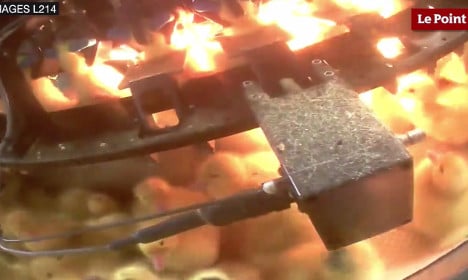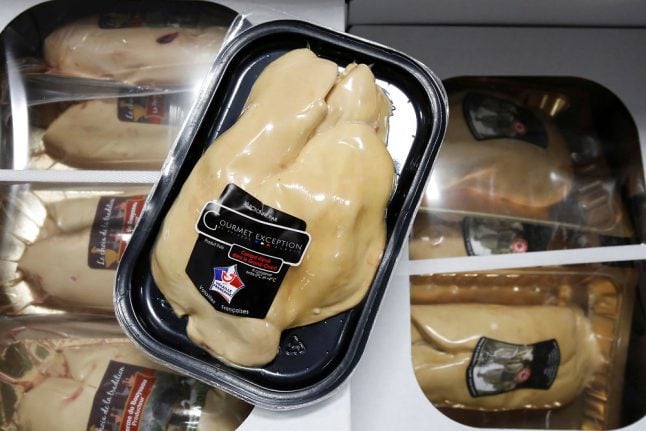Production of France's favourite festive-season treat has been hit by restrictions resulting from an avian influenza scare in the southwest, where most of the delicacy is produced.
“In the most optimistic scenario… a third of this region's (usual) output will not be produced,” Christophe Barrailh, head of the CIFOP group that represents the foie gras industry, told AFP on Wednesday.
It could be far worse, according to one of the largest producers, who said output could be halved.
Foie gras – consumed in lavish quantities in France at Christmas and New Year – is the “fatty liver” of geese and ducks which have been force-fed grain.
The highly virulent H5N1 strain of the bird flu virus was identified at a chicken farm in Dordogne in November, triggering intervention by veterinary watchdogs.
H5N1 is is highly lethal to birds but does not infect humans easily, although when it does is fatal in about 60 percent of cases, the World Health Organization (WHO) says.
The potential for infection comes when a human is in very close contact with a live bird which is sick with the disease.
Agriculture officials respond to an outbreak by quarantining poultry farms or restricting production to prevent the virus from being circulated by infected fowl, which are bought and sold for fattening or slaughter.
H5N1 has so far been detected on 69 farms in the region, prompting the agriculture ministry to impose restrictions on production until at least late May.
The order allows geese and duck farmers to continue raising the birds they currently have but bans them from taking on new chicks until after a cleanup launched this month.
After the current flock is sold, the farmers must halt all production while their farms are thoroughly cleaned and disinfected, the ministry says. Details of how the operation will be carried out will be announced later this month.
The programme has cost implications, as future production will require farmers to separate birds into batches according to age, to prevent the virus from spreading within a single flock.
Warning: This video may put you off foie gras forever

Will there be enough for Christmas?
On Wednesday some 500 duck farmers with artisanal foie gras businesses took to the streets of Mont-de-Marsan, in Aquitaine, to demand an easing of the measures.
“This sanitary crisis will allow big producers to restructure the industry by eliminating all the small farms,” the lobby group Peasant Confederation said in a joint statement with a duck and goose growers' union.
The region covered by the restrictions accounts for 80 percent of France's foie gras production, according to CIFOG.
“Initial estimates point to a production gap of 30 to 50 percent depending on the area,” said Dominique Duprat of Delpeyrat, which represents about 13 percent of the market.
He said prices would inevitably go up with “less available primary material and higher production costs”.
Duprat said existing stocks would be enough to supply festive dinners at Easter, but that the outlook was uncertain for next Christmas and New Year.
France, which produces 75 percent of global foie gras, exported nearly 5,000 tonnes of it in 2014. Production in the Dordogne is covered by a “protected geographical indication” label – a European Union (EU) scheme to defend local skills and values from imitation.
The luxury dish has become a battleground between animals-rights campaigners and defenders of France's gourmet traditions.
Force-feeding – known as “gavage” in France – has been banned in several countries but is legal in France.
On Tuesday, former Baywatch star Pamela Anderson appealed to French lawmakers to draft a law to ban the practice.
“Foie gras is not a healthy product and does not have a place in a civilized society,” she said. “These ducks did not have a single day of happiness in their short lives.”
A shocking video (see link below) filmed undercover at hatchery in France was published before Christmas that showed how young female ducklings are killed in a masher because only the male ones are deemed good enough to make foie gras.
Warning: This video may put you off foie gras forever


 Please whitelist us to continue reading.
Please whitelist us to continue reading.
Member comments